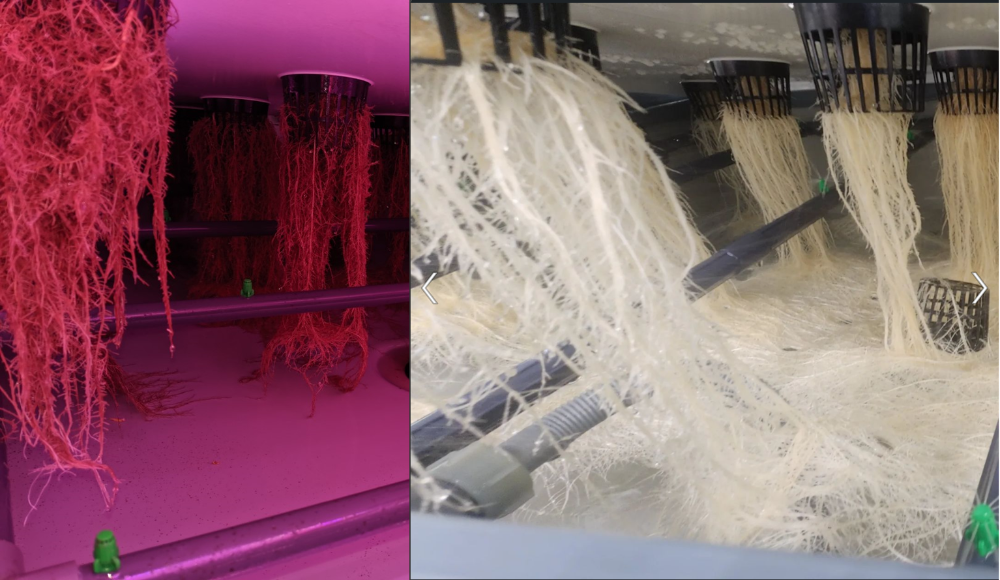
Topic: HOCl (Hypochlorous Acid) IntroducedBackgroundDisinfecting fertigation water prior to and during use is critical for minimizing pathogen establishment and transmission. Chlorine has been used to disinfect water for over one hundred years. While water chlorination can take many forms, a selective few are appropriate for hydroponic applications. Hypochlorous acid is one form of chlorine that is highly effective at disinfecting and maintaining water cleanliness in hydroponic systems. Despite its general utility, the instability of hypochlorous acid in solution and the creation of disinfection by-products can cause issues if not properly addressed. Free Chlorine - Chemical forms of Chlorine in SolutionFree chlorine refers to the chlorine in solution that has yet to bind to microbes or chemicals. These molecules are “free” to react with contaminants that may exist or be introduced. One of three free chlorine molecules can be generated when chlorine containing compounds are added to water. The relative extent to which each form is produced is dictated by the pH of the solution. Below a pH of 4, chlorine gas is formed (Cl2). Between a pH of 5 and 7, hypochlorous acid (HOCl) is the dominant form of free chlorine generated in solution. Above a pH value of 8, hypochlorite ions (OCl-) are generated predominantly. Of these free chlorine species, hypochlorous acid is most favorable for use as a cleaning and disinfecting agent in hydroponic systems. Utility of Hypochlorous AcidHypochlorous acid is an effective disinfecting agent that is safe for human contact. In fact, human white blood cells produce hypochlorous acid to fight infections. Hypochlorous acid’s strong oxidizing potential, combined with its neutral charge, grant it exceptional bactericidal, fungicidal, and viricidal properties. When added to a hydroponic system, the free hypochlorous acid in solution reacts rapidly with the fertigation water creating combined chlorines or chloramines - “spent” free chlorine that has that has bound itself to a contaminant or ammonium containing compounds. Bleach vs. Hypochlorous AcidThe chlorine containing compound used to generate free chlorine in bleach is sodium hypochlorite (NaOCl). To reduce decomposition, bleach solutions are typically buffered with the strong base sodium hydroxide (NaOH). As a result, the pH of most bleach solutions is between 11-13. At this pH range, the dominant free chlorine species found in bleach are hypochlorite ions. Because most pathogenic bacterial, fungal, and viral cell walls are also negatively charged, hypochlorite ions are magnetically repelled from them. For this reason, hypochlorous acid is a much more effective disinfectant than bleach. Sourcing Hypochlorous AcidCommercially available forms of hypochlorous acid for use in hydroponic systems are sold in a variety of concentrations, most of which can be found on the products Safety Data Sheet (SDS). Typically, hypochlorous acid sold for use in hydroponic systems are sold in either .028%, .04%, .05%, or .15% concentrations. Generating Hypochlorous acidHypochlorous acid can also be generated for use on site using different methods. The most common is generation by electrolysis using a commercially available electrolyzed water generator. The titanium electrolysis cell within the higher quality electrolyzed water generators can produce 1 liter of .02% hypochlorous acid at solution within 16 minutes using only tap water, vinegar (to maintain pH between 5 and 7), and table salt. Higher concentrations can be generated by running the electrolysis cells for additional time.
#HOCl #Hypochlorous-Acid Free-Chlorine #Hypochlorite #ORP #Oxidative-Reduction-Potential #PPM #Parts-per-Million
In our next letter we will take a deeper look at storing and dosing Hypochlorous acid. Previous letter: H2O2 Next letter: Storing and dosing Hypochlorous acid NEW! |